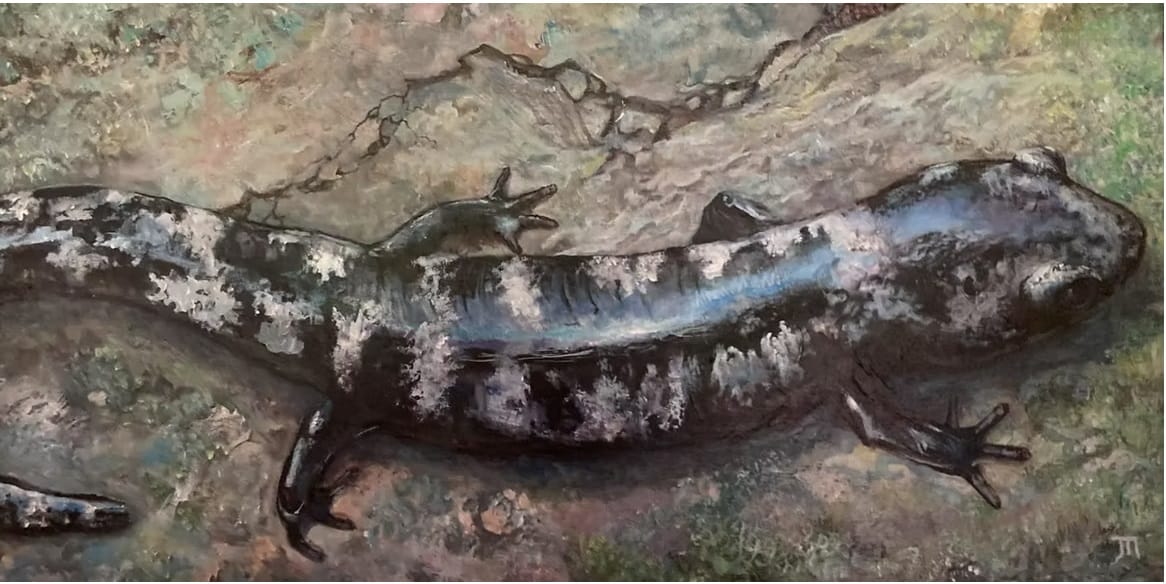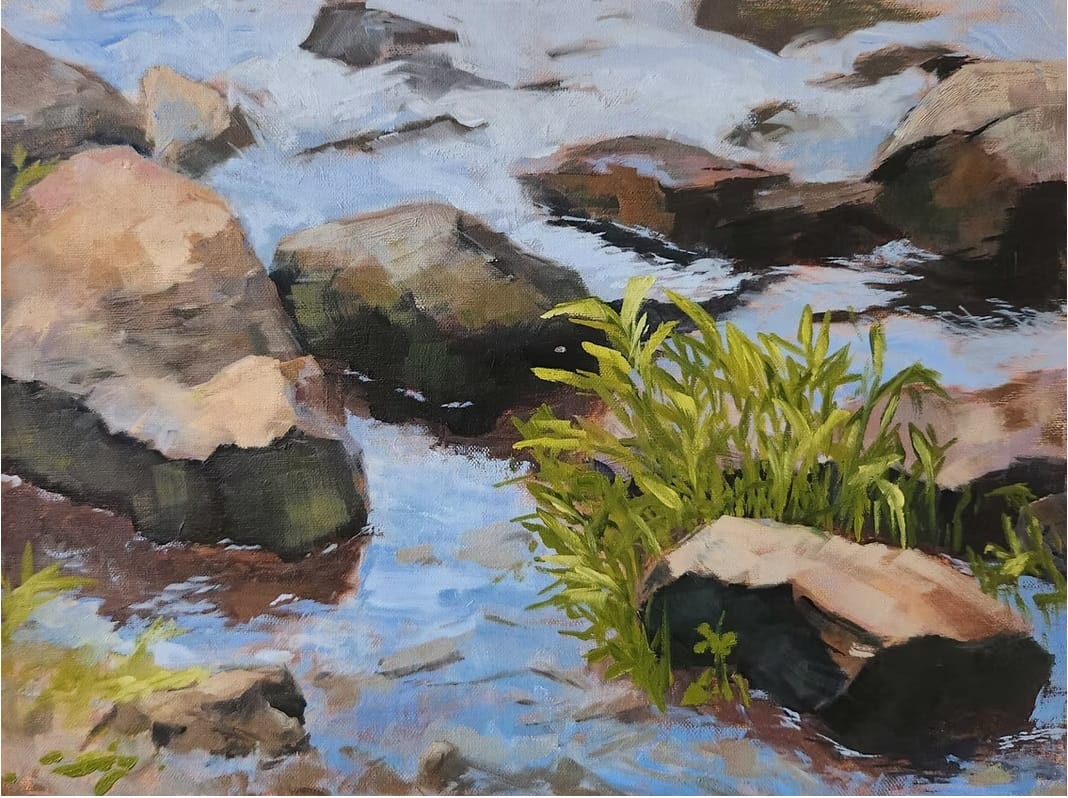Oils and Acrylics 2025
Manchester Art Association
Manchester Town Hall Gallery
Aug. 18, 2025
Heavy doesn’t mean sad or forlorn though. In fact, oil painting is a wonderful way to represent the interplay of the built and natural worlds.
I reflected on that while attending the Manchester Art Association’s new exhibit Oils and Acrylics 2025 in the gallery at the town hall.
As the name states, the exhibit features artwork of all styles and subjects, so long as the artist created them using acrylic or oil paint. The difference from watercolor art is apparent as soon as one looks at the artwork. Where watercolor work has an airy, almost translucent quality, oil and acrylic paintings are textured and stratified, with each layer of paint adding a weightiness to the canvas.
Take Christine Larson’s work, Case Falls. Larson uses heavy brush strokes to render the dark, wet stones beneath the waterfall, and contrasts them against the bright streaks of white and blue of the water cascading down. The trees as well are a darker shade, a more muted green that matches the overcast greys of the sky. The bridge which overlays the waterfall is the brightest object in the painting, highlighting its status as manmade, and while integrated into the scenery, still somewhat out of place.
Patricia Trapp’s piece, Marsh Mist, takes a different approach to representing water in nature. Her painting captures a foggy marsh as if she took a picture that was just out of focus, producing a dreamlike quality to the painting. The barren trees in the background look like gravity lines, dragging the viewing perspective down towards the marsh. The heaviness in this painting comes from that sense of gravity. Trapp’s ability to blend the thick fog in the center of the painting into something less menacing on the various embankments adds to the surrealness of the image.
When it comes to realism though, the acrylic pieces on display were remarkable. Salamander by Jerry Madara is exactly what it says, but the detail that Madara uses makes the amphibian jump off the page. Most impressive is the “sheen” on the top side of the salamander, which looks like the moist skin the animals are known for. The acrylic paint lends itself to the muted color scheme of the salamander, simultaneously recreating the earthy tones of the real world, while adding a visual pop that helps the salamander stand out.
As a non-expert, I found that the biggest difference between oil/acrylic works and watercolor work seems to be the layering. There’s a tactile sensation that I felt while looking at the new exhibit, even though I didn’t touch the paintings. Seeing the bumps and raised areas where paint was applied is a recreation of the world the paintings are trying to capture. Working in this style is quite impressive, and the members of the Manchester Art Association have delivered another great gallery for the viewing public.
NEXT
Oils and Acrylics 2025 runs through Nov. 13.
Jamil catches up with an artist he’s wanted to see all summer.







